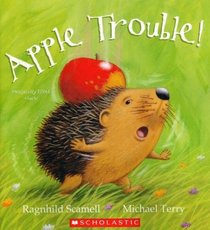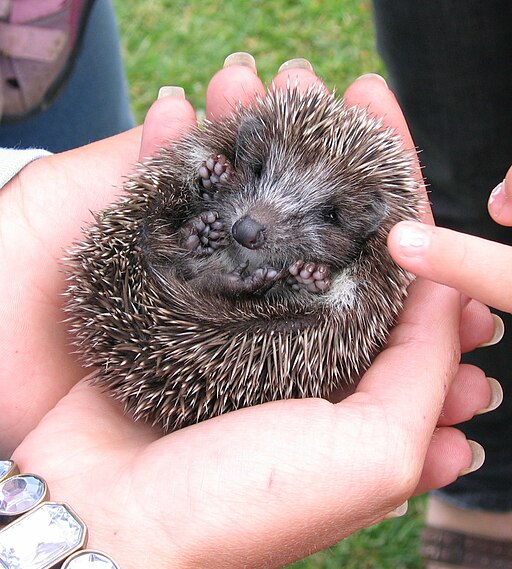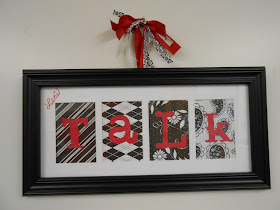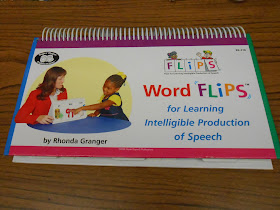There's a new book on the market on Childhood Apraxia of Speech -
"Speaking of Apraxia: A Parents' Guide to Childhood Apraxia of Speech," by Leslie Lindsay, R.N., B.S.N. When her daughter Kate was diagnosed with Childhood Apraxia of Speech (CAS), Leslie looked high and low for information (particularly information for parents) on the disorder. Not finding any books on the topic, Leslie, a child-adolescent psychiatric nurse, took on the daunting task of writing one! Here's the result:
I had seen a few reviews of the book on other blogs and speech sites (see below for links). I read the reviews on
Amazon (all 5-star if you were wondering). I ordered the book. I thought it would be a good reference for myself as a Speech-Language Pathologist. I also thought it would make a great addition to my resource library. When Leslie contacted me about the possibility of featuring the book on Carrie's Speech Corner, I jumped at the opportunity! This book truly is a wonderful source of information, not only for parents, but for SLPs as well. Leslie was kind enough to sit down and answer some questions, and to provide a copy of her book for one lucky reader as well!
An Interview with Leslie Lindsay:
There are a few books about CAS
geared toward SLPs. What is different about your book?
Well,
I’d like to say the big difference between my book about CAS is that it is
written from a parent’s perspective. I
really, really wanted a book when my own daughter (now 7 years and speaking
quite typically) was diagnosed at the age of 2.6 years. There wasn’t much available that really
appeased me.
This
book covers much of the “journey” of apraxia, more than the treatment (though
there is a chapter on that)—which is what those books geared to SLPs do.
In
SPEAKING OF APRAXIA, readers will find information from suspecting a problem to
getting help, navigating the school system, how to help your child at home, family/child
coping, resolving apraxia, networking, and more.
You’ve done a LOT of research on CAS
for this book (probably enough for a degree in speech-language pathology!). How
long did it take you to write the book? How did it feel to see all of your hard
work come to fruition, to hold the final copy of the book in your hands?
Giggle,
giggle! Yes, I *did* do a lot of
research on CAS and speech pathology in general. It wore me out!! I won’t lie.
It took me about 4 years from conception (“Hummm….there really ought to
be a parent-friendly book on this subject”) to bookshelf. Meanwhile, I was raising two young kids
(oldest was 6 when the book was released, youngest 5), and “living” apraxia. I researched not only apraxia, but also the
publishing industry, how-to-writing books, wrote and submitted proposals to
publishers and finally, finally secured a contract.
Getting
the final copy in my hands was like welcoming a newborn baby. Sure, it was a lot of work—the gestation, the
labor—but there’s still work to be done, the “raising” (launching) of the book,
if you will…you know, making sure it gets into the right hands. It’s hard to see one’s “baby” out there
making a difference. But on the other
hand, it’s so satisfying knowing that my words are touching the lives of
another family walking the same path.
Your daughter was first seen for a
speech and language evaluation at 19 months, how old was she when she received
the CAS diagnosis?
Kate
received the final diagnosis when she was 30 months, or 2 ½ years old. I was finally ready to hear the news. I knew something was going on, it was just a
matter of what. My evaluating SLP and I
are still in contact. She will tell
me—with a gleam in her eye—that I was “probably one of the only parents who
came right out and asked point-blank what I thought the diagnosis was.”
Was that the first time you heard
the term CAS? What thoughts were going through your mind when you heard the
term?
Never,
ever had I heard the term CAS until my daughter was diagnosed. Sure, I knew what apraxia was from my nursing
background, but that was always in terms of stroke victims (CVA) or TBI
(traumatic brain injury). But to hear it
applied to children and speech…well, I was clueless.
When
my evaluating SLP mentioned it to me, I shook my head. I was perplexed. “What’s that?” I recall asking. She gave me a very precise and SLP-like
answer, “A neurologically-based motor speech disorder.” I was scratching my head… What does *that*
mean? Will my child be able to
talk? What can I do? Plus, with my nursing background, I was eager
for research and prognosis information.
But,
the way it was presented at the clinic that day was very laissez faire. I didn’t get the severity of the diagnosis
until much later, when I started doing hard-core research.
Reading your depiction of Kate’s
assessment session was an eye opener. As an SLP, I conduct evaluations sessions
frequently. I typically take into account the anxiety of the child, but not the
parent. Do you have any advice for SLPs to help parents deal with the anxiety?
Oh,
we parents *are* anxious! We want to be
“super-parent,” we don’t want our kids to have anything different about
them. I think all parents would agree
that we want our children to be “above-average.” When there’s a glitch, we wonder what we did
wrong. Usually, nothing. But, still the worry is there.
As
a SLP, help the parent understand that CAS is treatable, but serious. Let me know that I am a valued part of the
treatment process. Give us time to ask
questions. Give us a moment to let
things register and then grieve. We may
need a little extra support. If you know
of something (a book, article, group, website), don’t hesitate in sharing. Most of all, realize that we love our
children more than anything in the world.
I
wrote an article on this very subject for Future SLPs. You can read it here.
Speech progress can be slow in
children diagnosed with CAS. That must have been frustrating for you as a
parent. Can you describe that frustration?
Yep. Frustration and impatience do not fare well
for the parent of a child with CAS. I
remember Kate going to speech therapy for what seemed like months before she
did much of anything verbally. They were
working on words I considered silly, like “up,” and “pop.” I was so excited when we finally heard a
two-word phrase!
It’s
also typical for kiddos with CAS to plateau with their speech. We got to a point where Kate was doing
“alright,” but I knew she wasn’t at a developmentally-appropriate level. She wanted to stop going to speech. She didn’t like it anymore. I had to motivate her with small
tokens/prizes like a trip to the park after speech. We also wanted her to get ready for
kindergarten, so we used that to our advantage, “You need to keep going to
speech so you are ready for kindergarten.”
She had a timeframe in mind and that was motivating to all of us.
You discuss different types of
Complementary and Alternative Medical (CAM) interventions. Have you tried any
yourself?
Yes! We have tried Dr. Sears Omega-3 chewies and
found that they were helpful. Kate was a
little more on-task and I did notice a surge in her vocabulary. Now, here’s the caveat: was it all a
coincidence? Would she have progressed
without the Dr. Sear’s chewies on-board?
I don’t know.
Finally,
I can’t say enough great things about occupational therapy (OT). We really felt this was the key that unlocked
Kate’s voice. Makes sense…CAS is a motor
speech disorder, so all of the gross motor work done in OT is really helpful to
these kids.
Describe for us your proudest “mommy
moment” during Kate’s journey.
The
first one that comes to mind is when Kate told us (her dad and I) that she
loved us. We were on vacation and
staying in a hotel. Kate was about three
years old She looked up at us from bed
as we were tucking her in and half-spoke, half-signed “I uv oo” It melted our hearts.
Okay,
now to share another more recent moment.
I was super proud when Kate introduced me at the book launch party in
April. “And now, I would like to
introduce my mom, Leslie Lindsay.” She
said this with perfect articulation, in a nice clear loud voice in a packed
room full of friends, family—and to her—strangers.
That's AMAZING! She's made great progress! You use the term “resolved” in your
book. Can you explain why you use that word and what it means for a child with
CAS?
It’s
a big word, I know. To many, the idea of
apraxia being ‘resolved’ is a hard concept to digest. Some feel the best word is ‘resolving,’
because it never really goes away 100%.
There are almost always still remnants lingering as these children grow
into adolescence and adulthood, particularly when stressed or tired.
For
a child with apraxia, it means that their CAS is no longer a major
concern. CAS doesn’t stop them from
being a typical kid; it’s no longer an impediment.
But
knowing that it once was a struggle is important for academic reasons—learning
to read and write could be more troublesome.
Social nuances and the latest fad (especially if hard to say!) could
trip-up some older kids (teenagers) with ‘resolved’ apraxia.
If there is only ONE THING readers
take from your book, what would you like that to be?
Wow. Another big one! There is hope. If you can dream it, you can do it! And we’re in this together—it’s a family
affair. Well, guess that was two things,
huh?
I asked our Facebook fans if they had any questions for you, and I thought this question from Christine was a great one: "What is the best way
for us as professionals to tell parents that we suspect CAS?"
Fantastic question. Again, I would direct you to learn more from
the Future SLPs article. But also: gently, privately (not with the
child present, if possible). If you can,
schedule a meeting where both parents can be in attendance at the clinic. Let them know CAS is serious, that you are
there to help; you and the parents are a partnership. Tell parents about your general goals for the
child, how you work (many parents don’t have a clue about what SLPs do), tell
them about how long treatment may take. Give them concrete suggestions on what
to do when they leave your clinic that day—and on future appointments. Equip them with resources. They may not want them right then
(overwhelmed), but do give them something—a book (okay, shameless plug!), a
hand-out, brochure, even a hug! Let
parents know you can give them more when they are ready.
Any final thoughts you’d like to
share with parents and SLPs?
a Rafflecopter giveaway




.png)
.png)

















































